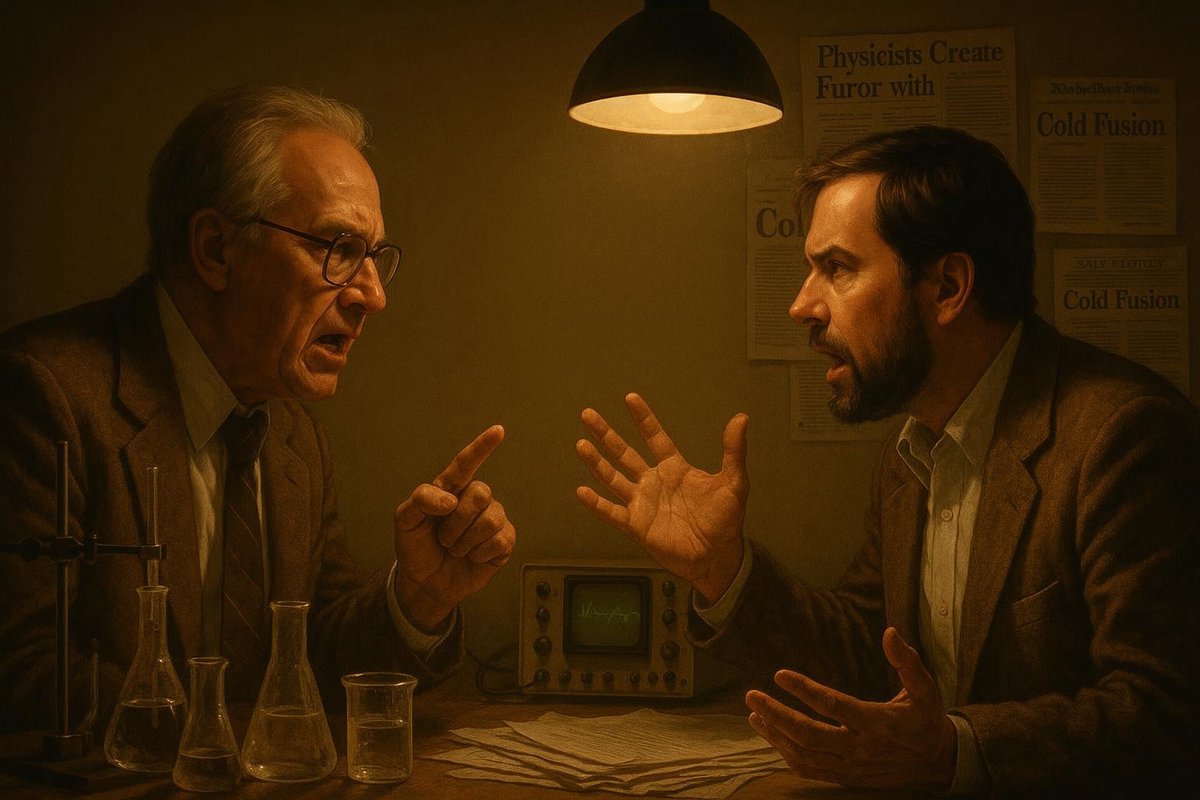
The Problem Context: A World Eager for Energy Solutions
In the late 1980s, the world was hungry for new energy solutions. Fossil fuels were the dominant energy source, yet concerns about their sustainability and environmental impact were growing. Nuclear energy, while promising, was fraught with its own issues, not least of which were safety fears and waste disposal problems. Enter Cold Fusion, a concept that seemed to promise the holy grail of energy: cheap, limitless power with zero emissions. But what exactly is Cold Fusion? The basic idea is that nuclear reactions could occur at or near room temperature, directly contradicting our understanding that such reactions require millions of degrees of heat.
- Interestingly, the concept of Cold Fusion promised to solve many energy problems at once.
- Of course, it challenged existing scientific principles, making it both alluring and suspect.
As time goes on, it’s clear that the allure of Cold Fusion wasn’t just scientific. It was wrapped up in cultural and political narratives of progress and dominance. What if this was the breakthrough that could redefine global power structures?
A Theoretical Breakthrough or Mirage?
March 23, 1989, is a date etched in the annals of controversial science. This was the day Martin Fleischmann and Stanley Pons announced they had achieved Cold Fusion in a lab at the University of Utah. This announcement was a bombshell, sending shockwaves through scientific communities and media outlets worldwide. But was it too good to be true?
- Many people believe that paradigm shifts in science come from breakthroughs like these, but what happens when those breakthroughs are more mirage than reality?
- Interestingly, the initial excitement was not supported by the rigorous peer review usually required for groundbreaking scientific claims.
Fleischmann and Pons chose to bypass traditional scientific channels, opting instead for a press conference, a decision that added to the skepticism. The scientific community is built on peer review and reproducibility, two elements glaringly absent at the time of their announcement.
Supporting Evidence or Lack Thereof
The cornerstone of any scientific claim is evidence that can be independently verified. Unfortunately for Cold Fusion, reproducibility became its Achilles’ heel. Laboratories around the world raced to replicate the Utah experiments, yet results were inconsistent at best.
- No wonder skepticism grew rapidly; when no one could reliably reproduce the results, many scientists began to question the original claim.
- Of course, some claimed political interference and vested interests had a hand in the narrative.
Various theories emerged, some suggesting experimental errors, others pointing to deliberate misrepresentation. The lack of credible, reproducible evidence led to the scientific community largely dismissing Cold Fusion as a failed experiment or even a hoax.
Modern Relevance: Lessons Learned and Unlearned
So, what does this mean for us today? Have we learned our lessons from the Cold Fusion saga, or are we doomed to repeat them? The idea that a single announcement could spark such a mix of hope and skepticism reveals much about human nature.
- Interestingly, the Cold Fusion episode reminds us of the necessity of rigorous scientific inquiry.
- As time goes on, it’s crucial to remember that science is a collaborative, iterative process.
Today, while Cold Fusion remains in the realm of speculative science, it serves as a cautionary tale. Scientific claims require evidence, peer review, and reproducibility. The interplay of science and politics continues to be a field fraught with complexity, one that demands our critical attention and respect.
In conclusion, the legacy of Cold Fusion isn’t just a story about failed science. It’s a narrative about the importance of maintaining rigor and skepticism, even as we chase the dream of revolutionary breakthroughs.
Fuel Someone Else’s Curiosity
If you found this exploration of Cold Fusion intriguing, consider sharing it with friends, colleagues, or anyone else fascinated by the intersection of science, history, and politics. Your curiosity can ignite a conversation, challenging others to think critically about the narratives we accept. After all, the best discoveries often begin with a question.

Leave a Reply